Unlike traditional marketing, which is one-directional, interactive marketing seeks two-way communication and mutual influence between brand and audience. Its goal is to create a bond and dialogue between the brand and its public, removing the barriers that typically exist between them.

For an interactive marketing campaign to succeed, you need to spark active customer engagement, participation, and response. To achieve this, interactive tools are used across communication channels where users can react, ask questions, or have a dialogue with the brand. Common techniques include games, polls, trivia quizzes, or personality tests. The objective is to improve the customer journey and increase conversions.
Key Attributes of Interactive Marketing
- Two-way communication
- Generates interaction, participation, and engagement
- Strengthens brand–audience relationships
- Customer-centered
- Seeks feedback and audience insights
The Difference Between Interactive and Traditional Marketing
Traditional marketing is based on Jerome McCarthy’s 1960 theory of the 4 Ps of the marketing mix: Product, Price, Place, and Promotion. In his book Basic Marketing: A Managerial Approach, McCarthy introduced the 4 Ps as a framework for planning any marketing strategy, a complete toolkit to reach customers and drive sales.
This paradigm dominated the first decades of modern marketing, when physical products, physical distribution, and mass communication were the norm. However, by the late 20th century, as markets became more dynamic and consumer-centric, a new framework emerged: the 4 Cs. The shift from 4 Ps to 4 Cs represented a major evolution driven by the need to focus on the customer in an increasingly complex and digital marketplace.
There were several reasons that led to this change in the marketing mix paradigm.
- Lack of customer focus: The central criticism of the 4 Ps model was that it focused on the manufacturer and the company’s internal processes rather than customer needs. The emphasis was on the product, not the customer’s problem or motivation. The new model switched the focus to customer desires and needs, asking how a product solves a problem and the benefits it provides.
- * Market maturity and the need for interaction: As markets and consumers matured, new marketing strategies became necessary, as product differences were no longer the deciding factor. Brands had to become customer-centered, understand their needs, and deliver personalized value to stay competitive.
- * Technology and the digital environment: The level of interactivity and communication now possible with the internet was unimaginable in the 1960s. When Robert Lauterborn proposed the 4 Cs model in 1990, technology was rapidly evolving. The first martech tools were appearing, and the digital environment encouraged a more relational, dialogue-based approach to marketing.
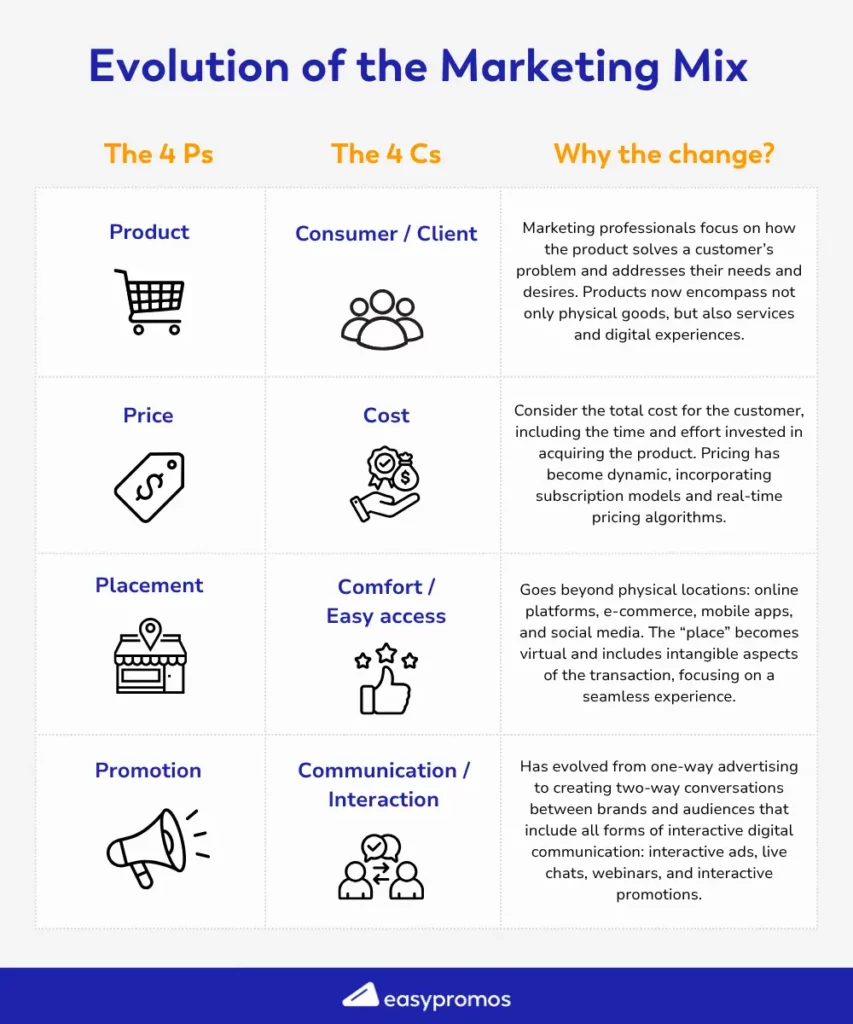
It was in this context that MarTech platforms and tools (Marketing Technology) emerged as a direct response to marketing’s new digital challenges. It was around 2009–2011 that many interactive marketing platforms appeared, including Easypromos (founded in March 2010), which specialized in dynamic sweepstakes and interactive social media promotions.
Easypromos belongs to the MarTech subgroup focused on generating interactive content — a field in which it has continuously adapted to trends, the evolution of social media, and the opportunities offered by new technologies and AI.
How to Use Interactive Marketing for Your Brand
Interactive marketing actions are tactics designed to foster two-way communication and achieve active user engagement with a brand. They form part of the “C” for Communication in Robert Lauterborn’s 4 Cs marketing mix (1990), replacing traditional advertising, which interrupts and delivers one-way messages. You can integrate these actions into your brand’s marketing strategy, either on their own or in combination with traditional formats, such as display banners or unidirectional ads.
In this context, several interactive content formats have emerged to invite users to participate and share their feedback. The main ones include surveys, quizzes, personality tests, games, product recommenders, and more.
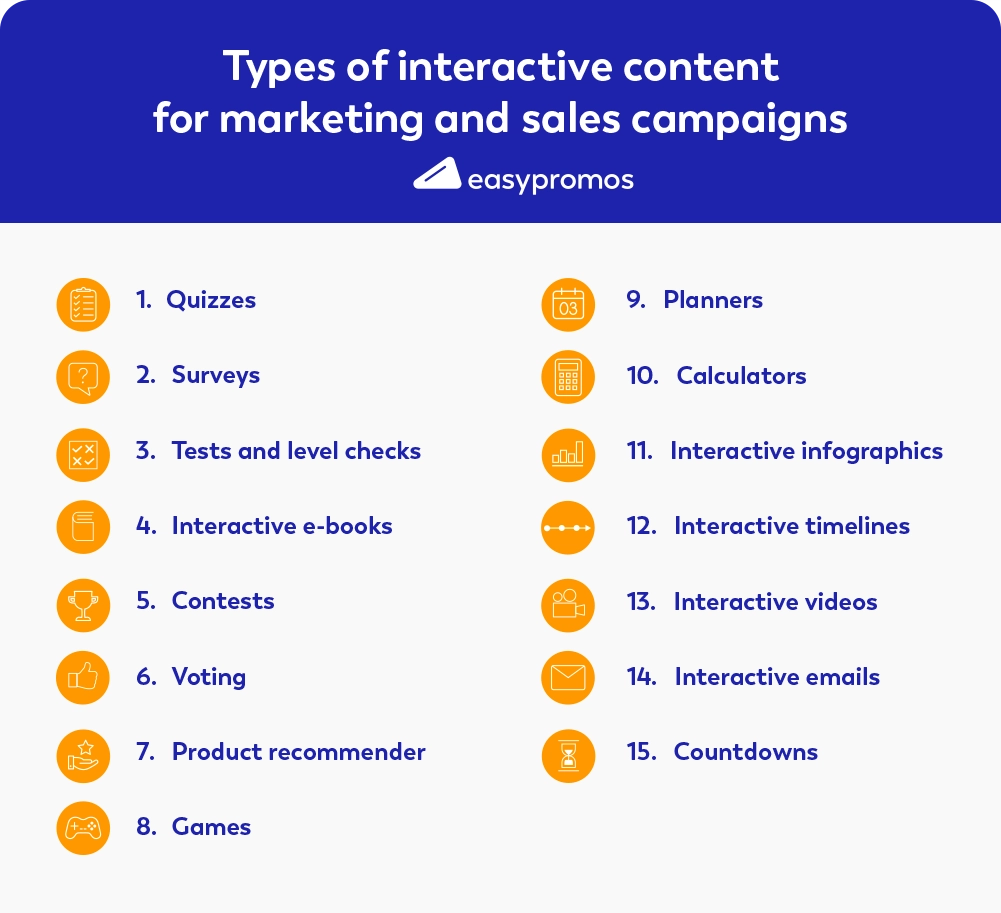
Although interactive formats don’t yet appear widely in online advertising studies, the IAB 2021 report on branded content and native advertising already identified new formats that allow more audience participation.
Respondents in the study stated they preferred online advertising that was informative, attention-grabbing, and helpful in making purchase decisions. The examples below illustrate how the old “P” (Promotion) has evolved into more diverse, interaction-driven actions, targeting more specific and niche audiences but generating much higher engagement than traditional one-way campaigns.
Discover how to make your advertising more interactive with games and promotions through Pause Ads.
The Most Common Interactive Promotion Formats
Easypromos uses interactive content to turn it into digital promotions that help brands connect with their audiences more effectively. These interactive formats grab attention — the first step in starting a conversation. The main types of interactive promotions include:
- Giveaways: Essential tools for brand awareness and visibility that range from social media giveaways based on simple interactions like comments or likes to registration-based draws distributed across multiple channels, which also help collect contact data.
- Games, puzzles, and challenges: Activities that use play and gamification to capture attention and engagement. Nowadays, any brand can launch a fully customized mini-game without any coding.
- Quizzes: Used to collect customer or prospect data through simple questions, knowledge tests, satisfaction surveys, trivia, personality tests, or product recommenders.
- Contests and UGC (User-Generated Content) actions: Designed to encourage users to create and publish brand-related content, often leveraging micro-influencers or “ordinary celebrities” perceived as authentic and relatable.
For an interactive promotion to succeed, it’s ideal to combine it with attractive prizes, a proven way to boost participation. Prize distribution can take many forms, but some of the most effective are those that play with chance or surprise, such as:
- Instant prizes: Real-time rewards granted as soon as a participant completes registration. Popular formats include prize wheels, digital scratch cards, and instant coupons or discounts.
- Purchase-based promotions: “Shop and Win” campaigns that reward customers for buying. Today, receipts can be validated online with AI to automatically issue instant rewards.
Levels of Interaction in Marketing
When planning your interactive marketing strategy, consider how much interaction you’re asking from your audience. Since the COVID-19 crisis, digital transformation and smartphone usage have accelerated dramatically, so most users are now comfortable with some degree of interaction. Still, ask yourself: what level of interaction can we realistically expect from our audience?
To frame interaction levels, we can borrow from e-learning, a field that has studied them extensively because they directly influence learning effectiveness.
In digital marketing, the concept is less formalized, often expressed through ideas like engagement or customer experience. But marketing can benefit from e-learning’s methodological foundation to define and measure interaction levels more rigorously. The following table (in the original article) illustrates a proposed model for analyzing your audience and identifying their interaction level.

Examples of Interactive Marketing by Objective
Interactive marketing offers a wide range of actions designed to achieve multiple goals at once, far outperforming one-way advertising in engagement. According to HubSpot’s The 2025 State of Marketing report, brands that use interactive content see 47% more engagement than those using static content, among other benefits.
Below are examples of how interactive promotions from our clients achieved these results:
1. Interactive Content to Drive Reach and Brand Awareness
Social media is the natural home of interactivity. For years, brands have measured success through small audience actions — following, liking, commenting, tagging, or sharing. These simple gestures build the first level of user–brand interaction. Social media giveaways amplify this bond through rewards to turn users into active participants.
Habitium launched multi-network giveaways on Instagram and Facebook as part of its visibility strategy, growing from 6,000 to 13,000 Instagram followers and achieving similar increases on X and Facebook. Its giveaway posts generated the most reach and boosted engagement across all content. The campaign not only expanded its audience but also strengthened brand loyalty and drove qualified traffic to its website.
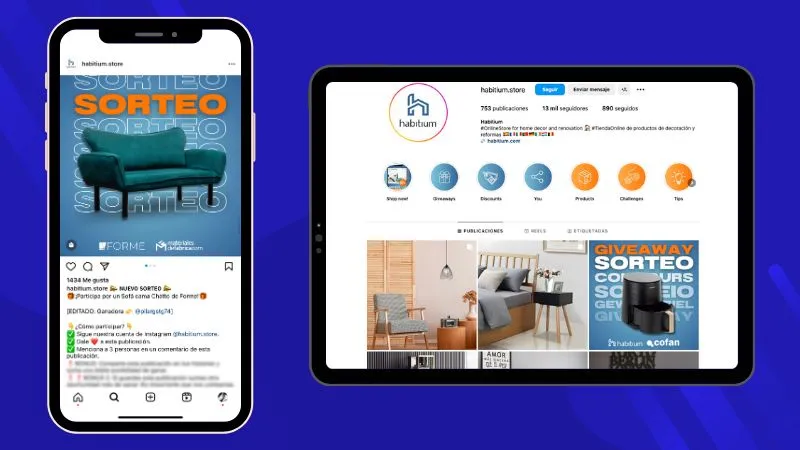
Social media giveaways are the natural first step in an interactive marketing strategy to test audience responsiveness and are used by many brands to grow their communities and maintain engagement. Properly done, they can achieve massive participation, as in the case of Kiko Milano, whose Instagram giveaway featuring its seasonal star product drew over 37,000 participants, dramatically boosting visibility and reach.
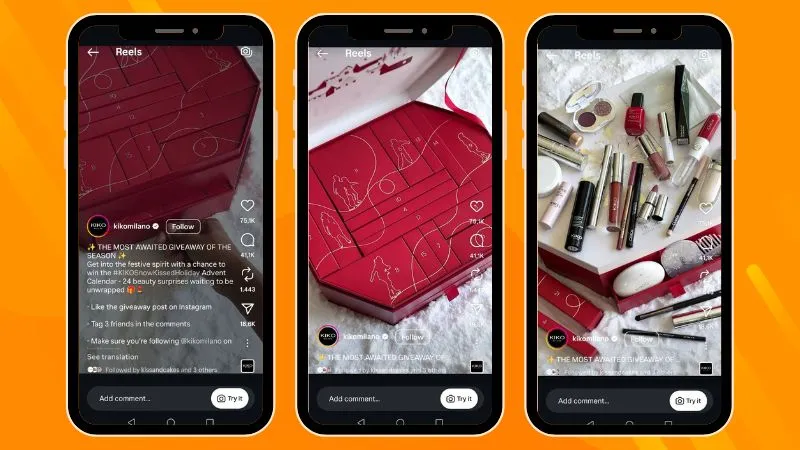
2. Interactive Campaigns to Build Deeper Engagement
While social media giveaways can drive engagement, it’s often superficial, a few seconds of attention. For deeper engagement, brands need more elaborate interactive dynamics. Games and gamification are ideal for this purpose.
Interactive content drives 52.6% more engagement than static content (Mediafly, 2022). Games, in particular, generate more visible activation. For example, interactive CTV (Connected TV) ads with gamification elements increase engagement by 126% and gain an average of 71 extra seconds of attention compared to standard pre-rolls (Innovid study).
Savanna Namibia, a cider brand, launched a “Slide & Match” game to promote a sponsored music festival, inviting users to match brand-themed elements. Available for three weeks, players could play up to 10 times per week in three-minute sessions, averaging 30 minutes of brand interaction and strong recall before the event. Prizes were raffled among participants to encourage play.
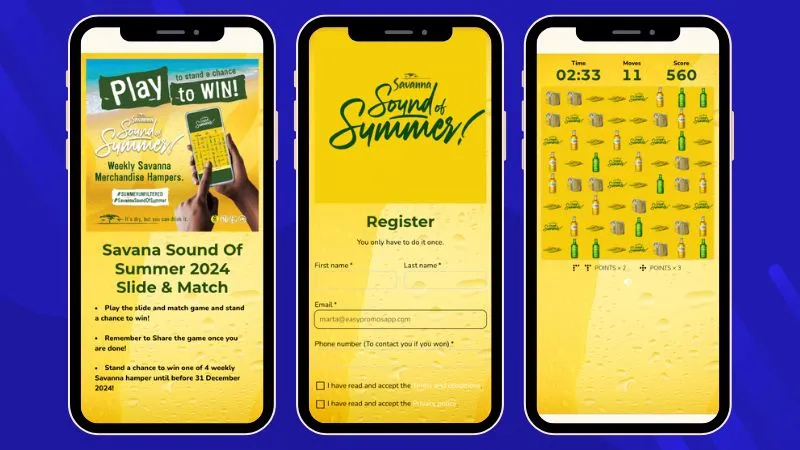
Similarly, Mexican shoe brand Flexi launched an online game with Easypromos to generate leads and engagement. Over a 10–12 week campaign hosted on a branded microsite, it captured over 130,000 new contacts, automatically integrated into its email marketing strategy. By combining fun and incentives, Flexi converted anonymous visitors into active participants, proving how gamified experiences boost engagement and conversion.
Spin the Wheel promotions also generate high engagement thanks to their mix of chance and reward.
3. Interactive Marketing for Lead Generation
Interactive marketing is highly effective for lead generation because its essence is a two-way interaction between brand and user.
Forward-thinking brands prioritize collecting user data to build long-term relationships. While social media is great for attracting audiences and driving initial engagement, brands also need to own the data to ensure direct communication and avoid dependence on changing social algorithms. Collected data can then fuel email, SMS, or app-based campaigns to turn visitors into users through embedded interactive promotions.
That’s why many interactive promotions offer rewards in exchange for registration — a win–win for both brand and user. Flexi’s campaign is one example, but the most common format is a registration-based giveaway where users provide their data in exchange for a chance to win.
Movistar VIP Experience focused on lead generation through an online giveaway. Users filled out a form to enter for a chance to win an exclusive VIP basketball experience, tickets, official merchandise, and surprises. The campaign, promoted organically and via paid ads on social media, attracted over 13,000 registrations. It built brand awareness, engagement, and a larger qualified contact base, strengthening Movistar’s connection with sports fans.
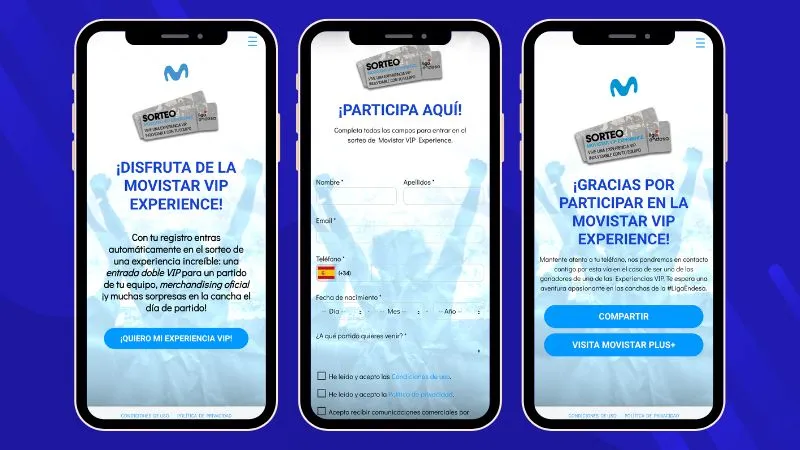
Discover more examples of entry form giveaways for your next interactive marketing campaign.
4. Product Promotion and Sales Through Interactive Marketing
One of the most common ways to promote a product is with a social media giveaway. Brands can also drive product awareness and sales through games, quizzes, product recommenders, or coupon distribution. For example, Bon Preu Esclat supermarkets launched a product knowledge quiz about fresh produce. It educated followers while promoting its products. Participants received personalized results and prizes: a downloadable guide and an entry into a year-long fresh produce giveaway for top scorers.
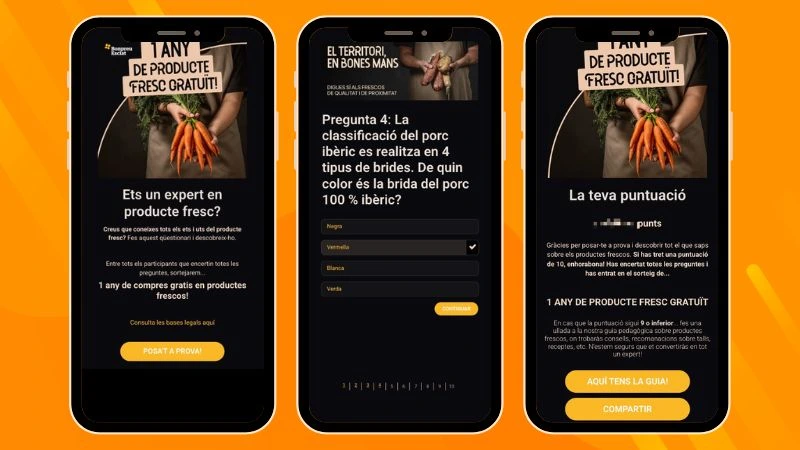
Discounts and coupons are another way to attract attention and curiosity. Toy brand Eurekakids promoted its back-to-school collection with a digital Scratch & Win offering instant prizes. Users registered, “scratched” a box to reveal their prize, and shared contact data, allowing the brand to continue engagement after the campaign.
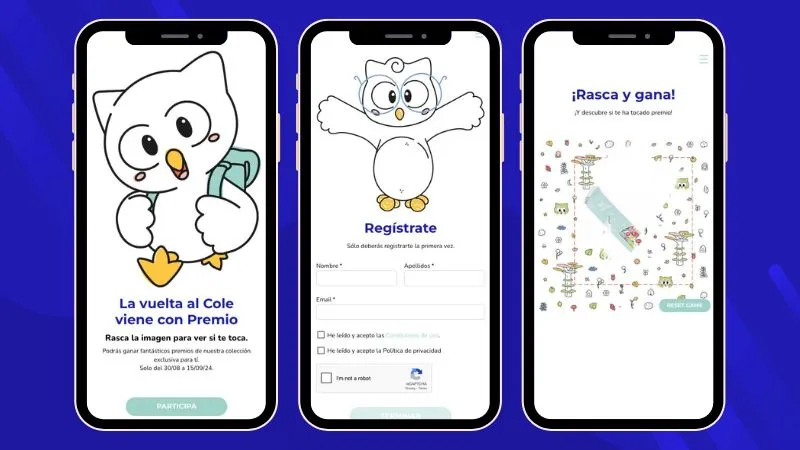
5. Using Interactive Content to Reward and Retain Customers
Customer loyalty is one area where interactive content has shown the highest impact. It’s not enough to retain — brands must create memorable experiences that reinforce emotional bonds over time.
Brands can use interactive marketing after purchase or to encourage repeat buying. Gift store chain Flying Tiger launched a “Golden Ticket” campaign to surprise loyal customers, with winning codes hidden in surprise bags. Customers could check their codes on a website, provided that they were registered in the loyalty program. This rewarded loyal customers and boosted new memberships.

6. Turning Customers into Brand Ambassadors Through Interactive Marketing
Getting customers to share their experiences is the most challenging goal — it requires the highest level of commitment. However, with attractive incentives and a strong emotional connection, brands can achieve it through online contests.
For example, Kinder Bueno launched a series of Instagram Story giveaways asking users to post a story with the product, mention the brand, and participate weekly. Prizes included product-filled suitcases and exclusive stickers. This campaign successfully inspired followers to generate UGC, amplifying the brand’s visibility and community engagement.
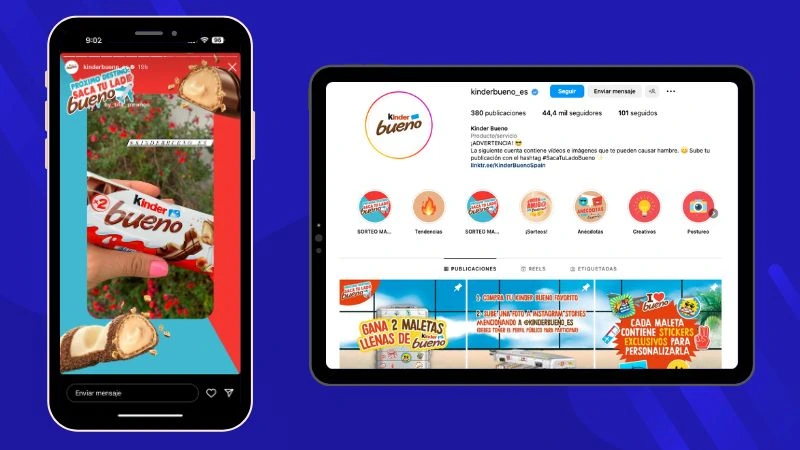
Download the free ebook: “The role of contests in your marketing strategy” to learn new ways of collecting UGC
7. Interactive Marketing for Internal Audiences
Interactive actions are also powerful tools for internal communication — improving relationships, motivation, and team spirit. They are used in team-building strategies, employee recognition, and internal training initiatives.
For instance, Clase Azul México runs a monthly internal prize wheel for employees celebrating birthdays — rewarding loyalty and commitment.
Meanwhile, Vegalsa-Eroski also engages staff by raffling basketball tickets among employees who sign up for the draw, fostering transparency and participation.
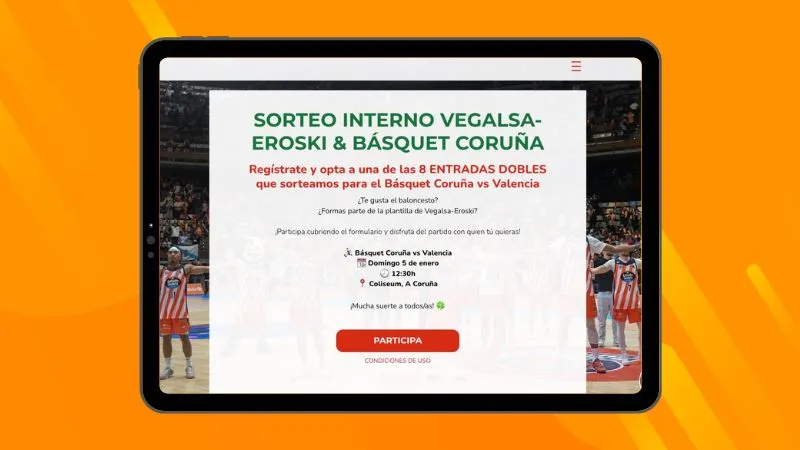
The effectiveness of interactive campaigns is proven, and brands that try them once tend to repeat them. Many even run interactive promotions year-round as a core method for lead generation.
Want to explore interactive marketing for your brand? Easypromos is the most open and user-friendly platform for creating interactive promotions, no programming required, with real human support via chat and email. Create a free account today and start exploring how to build your own interactive marketing campaign.
 Request a demo
Request a demo